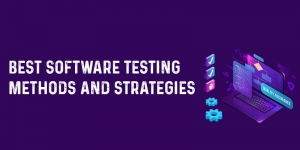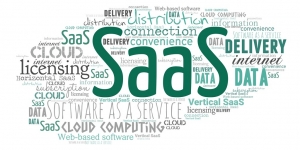What makes a data management platform essential for scaling enterprises? Explore the strategic benefits of efficient data handling, seamless integration, and enhanced decision-making.
Exploring Data Management Platforms
Data management platforms are vital tools for enterprises looking to scale. They bring order and efficiency to handling vast data sets. These platforms are the backbone of seamless integration and scalability, enabling businesses to grow and adapt.
Choosing the right platform is crucial. It affects how data is managed, accessed, and leveraged for business growth. A well-chosen platform supports robust data handling and aligns with organizational goals. This alignment is key to unlocking the full potential of your data.
Key Benefits of Data Management Platforms:
-
Efficient Data Handling: Manage large volumes of data without hassle.
-
Seamless Integration: Ensure all data systems work together smoothly.
-
Scalability: Adapt and grow with ease as your business expands.
-
Enhanced Decision-Making: Access insights quickly for strategic moves.
-
Increased Reliability: Trust in consistent and accurate data operations.
These platforms are more than just tools—they're strategic assets. They empower enterprises to harness data effectively, driving innovation and efficiency. With the right platform, businesses can not only manage data but thrive amidst growing demands.
RDF for Efficient Data Sharing
RDF, or Resource Description Framework, is a game-changer in data management services and sharing. It uses graph data representation to make data merging a breeze and improve interoperability. This means that different systems can talk to each other smoothly without hiccups.
RDF is all about standardizing data formats. This standardization helps avoid vendor lock-in, giving enterprises the flexibility to switch systems without losing valuable data. It ensures that your data remains accessible and reusable across various platforms, which is crucial for maintaining data integrity and consistency.
Adopting RDF supports scalable data management. How? By allowing easy data transfer and integration across different systems. You can align your data models to specific needs while keeping a core structure intact. This alignment ensures that your data strategy is robust, efficient, and future-proof. For businesses looking to enhance their data management capabilities, understanding the role of Data Lakes in business impact can provide further insights into efficient data handling and storage.
Key Benefits of RDF:
-
Graph Data Representation: Simplifies data merging.
-
Interoperability: Enhances communication between systems.
-
Standardized Formats: Avoids vendor lock-in.
-
Scalability: Supports easy data transfer and integration.
RDF isn't just a tool; it's a strategic asset for enterprises. It empowers organizations to manage data efficiently, ensuring that data is not just stored but actively used to drive innovation and growth.
Seamless Data Integration Techniques
Seamless data integration is crucial for enterprises managing vast amounts of information. Standardized formats like RDF simplify data migration and help avoid vendor lock-in. RDF ensures that data moves smoothly between systems, preserving its integrity and usability.
A federated data architecture supports this by allowing data to be exchanged efficiently between decentralized systems. This architecture maintains data fidelity, ensuring that information remains accurate and consistent across platforms. Federated systems also promote flexibility, letting you switch tools without losing crucial data. For a deeper understanding of how federated systems and other trends are shaping the future of data management, explore the key trends influencing the modern data stack in 2023.
To achieve consistent and reliable data management, it's essential to establish clear protocols and standards for data exchange. These protocols ensure that data flows seamlessly across different platforms and storage solutions. They help maintain data quality and prevent discrepancies that can arise from improper handling.
Key Strategies for Seamless Integration:
-
Use Standardized Formats: Implement RDF for smooth data migration.
-
Adopt Federated Architecture: Enable efficient data exchange between systems.
-
Establish Protocols: Ensure consistent and reliable data flow.
-
Maintain Data Fidelity: Preserve data accuracy and integrity during transfers.
Integrating these strategies can enhance your data management capabilities, making your enterprise more agile and adaptable. With these techniques, you can ensure that your data systems work together harmoniously, supporting business growth and innovation.

Decentralized Data Architecture Benefits
Decentralized data architecture distributes enterprise data across locations, improving flexibility and access. This setup speeds up time to market as teams can analyze data from anywhere without bottlenecks.
Managing decentralized data has its challenges. Ensuring data quality and governance across systems can be difficult. Maintaining consistency becomes crucial with spread-out data. This calls for effective strategies to ensure data integrity and reliability. For organizations looking to enhance their data management practices amidst technological advancements, exploring best practices for modernizing data management can provide valuable insights.
Good planning helps tackle these challenges. Clear protocols and governance standards allow enterprises to manage decentralized data well. This involves setting data policies, ensuring quality, and securing compliance for a coherent data environment.
Benefits of Decentralized Data Architecture:
-
Improved Data Distribution: Data is accessible from various locations, enhancing flexibility.
-
Quicker Time to Market: Teams work with data more efficiently, speeding up processes.
-
Enhanced Scalability: Adapts to growing data needs without central bottlenecks.
-
Increased Flexibility: Supports dynamic environments with diverse data requirements.
A decentralized approach improves data handling and adaptability, helping enterprises scale operations. With solid planning and governance, this approach can greatly enhance how organizations use their data.
Role of Metadata in Data Management
Metadata guides and provides context about data. It enhances data models and supports organizational goals. Good metadata makes data easy to find and use, boosting efficiency in data-driven operations.
Layer your metadata to create custom data management solutions. Organize it in layers that fit your business needs while keeping a solid core structure. This approach improves data governance, giving all stakeholders access to consistent, reliable data.
RDF (Resource Description Framework) is a powerful tool for metadata management. It represents metadata as graphs, helping merge and align data models smoothly. RDF offers the flexibility to adapt metadata management to your organization's needs, making data integration and access a breeze.
To understand the broader framework of data management and its importance in supporting IT systems and strategic decision-making, explore our insights on data management and its importance.
Key Benefits of Proper Metadata Management:
-
Improved Findability: Quickly locate data across platforms.
-
Enhanced Usability: Access and work with data more easily.
-
Customizable Solutions: Tailor data management to your business needs.
-
Consistent Governance: Keep data reliable and intact.
Effective metadata management boosts the value of your data assets. Our expertise ensures your metadata supports both daily operations and long-term goals.
Visualization and Data Understanding
Visualization tools play a crucial role in making sense of complex datasets. They transform raw data into graphical forms, revealing patterns and connections that might otherwise go unnoticed. Let's face it, staring at rows and columns of data isn't the most engaging way to find insights. That's where visualization steps in.
Using visualization, you can easily understand relationships within RDF datasets. These tools help you see the bigger picture by representing data as graphs or charts, making analysis straightforward. They simplify the complexity, enabling you to spot trends, outliers, and correlations with ease. For those new to this field, exploring a comprehensive guide to data visualization for beginners can provide foundational insights into transforming complex data into simple, engaging visuals.
Benefits of Visualization Tools:
-
Simplified Analysis: Transform complex data into understandable visuals.
-
Enhanced Insight: Reveal hidden patterns and relationships.
-
Improved Decision-Making: Support strategic choices with clear data visuals.
Leveraging visualization techniques is essential for effective data management. Tools like dashboards, heat maps, and scatter plots are just a few examples. These techniques make data interpretation intuitive, allowing you to focus on driving decisions with confidence. Furthermore, understanding the role of data visualization in business can highlight its importance in translating complex data into actionable insights, crucial for strategic decision-making.
Visualization doesn't just make data pretty—it makes it powerful. By using the right tools, enterprises can unlock the potential of their data, supporting informed decision-making and fostering a data-driven culture.

Key Takeaways on Data Management Platforms
Data management platforms are foundational for enterprises aiming to scale effectively. They streamline data handling, ensuring systems operate smoothly and support business growth. Choosing the right platform is critical. It impacts how well data is managed and utilized, ultimately affecting an organization's ability to innovate and remain competitive.
Technologies like RDF and decentralized data architectures enhance data sharing and integration. RDF simplifies data merging, improving interoperability across systems. Decentralized architectures offer flexibility, enabling data to be accessed and managed efficiently from various locations. These technologies ensure that data remains consistent and accessible, supporting robust data strategies.
Metadata plays a crucial role in organizing and providing context to data. Proper metadata management enhances data findability and usability, fostering better decision-making. Visualization tools complement this by translating complex datasets into clear, actionable insights. They reveal patterns and trends, making data-driven strategies more effective.
Considerations for Data Management Solutions:
-
Platform Selection: Ensure it aligns with organizational needs and supports growth.
-
Technology Utilization: Leverage RDF and decentralized architectures for scalable solutions.
-
Metadata Management: Enhance data accessibility and governance.
-
Visualization Tools: Use them to transform data into actionable insights.
Evaluating these aspects helps enterprises choose data management services that drive efficiency and scalability. A well-selected platform not only handles data effectively but also supports future business expansion.






